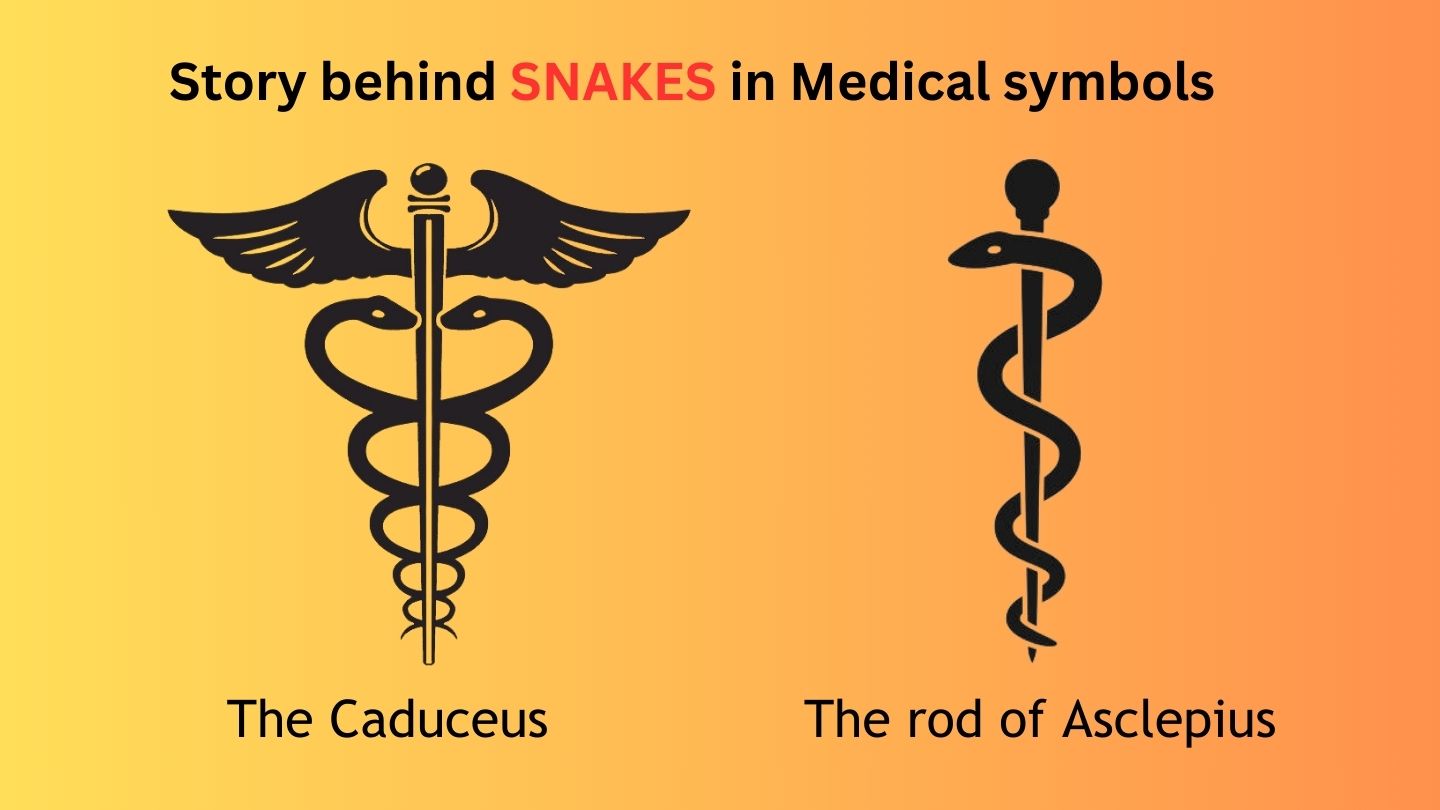The use of snakes in medical symbols has a deep-rooted history, evoking symbolism that transcends cultures and spans centuries. Two prominent symbols, the Caduceus and the Rod of Asclepius, feature snakes as central elements, each carrying unique meanings and associations within the realm of medicine and healing.
The Caduceus:
The Caduceus, is a symbol characterized by a rod entwined by two snakes with wings at the top. Its origins can be traced to ancient Greece, where it was associated with Hermes, the messenger of the gods. The Ancient Romans knew him as Mercury. During one journey, he spotted two snakes in a fight. To intervene, he tossed a stick, and instantly, the serpents coiled around it, staying still. Hermes was so pleased with the outcome that he adopted the staff as his own. Thus, the caduceus became a symbol associated with Hermes, representing commerce and travel. The intertwining snakes on the Caduceus have been linked to various interpretations, including the shedding of snake skin as a symbol of renewal and transformation.
The Rod of Asclepius:
This symbol features a single serpent wrapped around a staff or rod, representing Asclepius, the ancient Greek god of healing. Similar to Hermes, Asclepius, the son of Apollo, the Sun God, had an association with snakes. According to one account, a snake cleaned his ears, bestowing upon him healing wisdom. Another narrative involves a snake offering him an herb endowed with the ability to bring the dead back to life.. The serpent, often associated with rejuvenation and shedding of skin, symbolizes the transformative and regenerative nature of medicine. The Rod of Asclepius, with its singular focus on healing, has been widely embraced by the medical community and remains a prevalent symbol on medical insignia, emblems, and healthcare organizations' logos.
Why is the symbol of Snakes used?
The snake was linked to Asclepios, the ancient Greek God of medicine, and was thought to have healing powers. People believed it could cure someone just by touching them. The snake also had connections to medicines and fighting poison, as it had its own antivenom. It was associated with sciences like toxicology and toxinology, symbolizing both life and death.
The snake's ability to shed its skin was seen as a symbol of the circle of life since ancient Greek times. In modern medicine symbols, like the snake around a rod or next to a medicine cup, it reflects its roots in the ancient Mediterranean area, supported by archaeological evidence and stories. The snake's dual nature, having both healing and poisonous aspects, mirrors the properties of medicines.
Both the Caduceus and the Rod of Asclepius share a common thread in their association with snakes. Snakes have been historically revered for their ability to shed old skin, a metaphor for healing, renewal, and transformation. The serpentine symbolism underscores the complex and nuanced nature of the medical profession, where healing involves not only treating ailments but fostering regeneration and holistic well-being.
Shared Symbolism:
The confusion starts with the use of Caduceus and Rod of Asclepius. The Caduceus is a symbol of Hermes or Mercury in Greek and Roman mythology. Caduceus symbol is identified with thieves, merchants, and messengers, and Mercury is said to be a patron of thieves and outlaws, not a desirable protector of physicians. The symbol originated when Mercury once attempted to stop a fight between two snakes by throwing his rod at them, whereupon they twined themselves around the rod, and the symbol was born. The Rod of Asclepius belongs to Aesculapius, who was the revered Greek god of healing.
The modern use of staff of Aesculapius started when The American Medical Association had the staff of Aesculapius as its symbol in 1910. The Royal Army Medical Corp, French Military Service, and other medical organizations had done the same. The World Health Organization has the staff of Aesculapius in the logo. US Army Medical Corps, the Public Health Service, and the US Marine Hospital however use the Caduceus largely as a result of the adoption of the Caduceus as its insignia by the US Army Medical Corps in 1902. Thus, it symbolizes administrative emblem, implying neutral and noncombatant status.
The appeal of the caduceus, featuring two snakes, likely stems from its aesthetic charm, surpassing that of the single-snake design on the Staff of Aesculapius. The dual snakes provide a balanced symmetry, contributing to its visual allure. This configuration is frequently employed in industries associated with medicine, such as pharmaceuticals and hospital supplies.
The significance of snakes in the medical symbols of Caduceus and the Rod of Asclepius reflects the enduring connection between ancient mythology and modern healthcare practices. While the Caduceus may persist in certain contexts, the Rod of Asclepius remains the more authentic and widely accepted symbol for the medical profession. Snakes, with their rich symbolism of transformation and renewal, continue to inspire and represent the noble pursuit of healing in the field of medicine.
Be updated to nursing news and jobs here
References:
https://www.researchgate.net/publication/332432133_Why_is_the_Medical_Symbol_a_Snake









